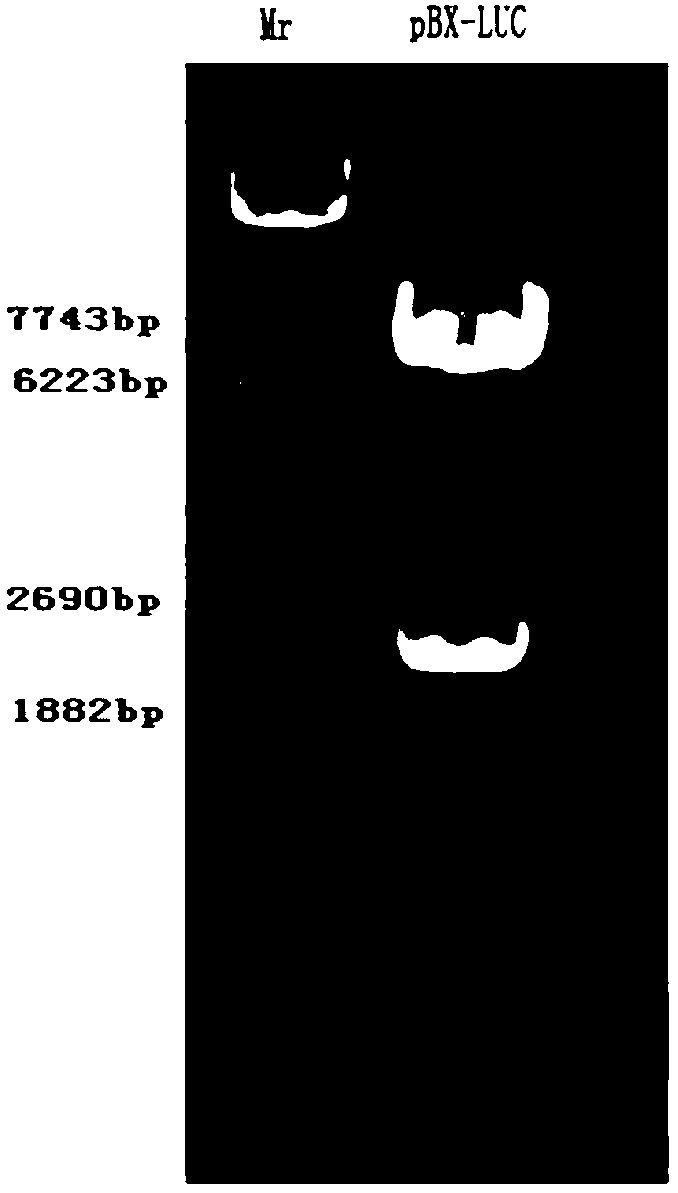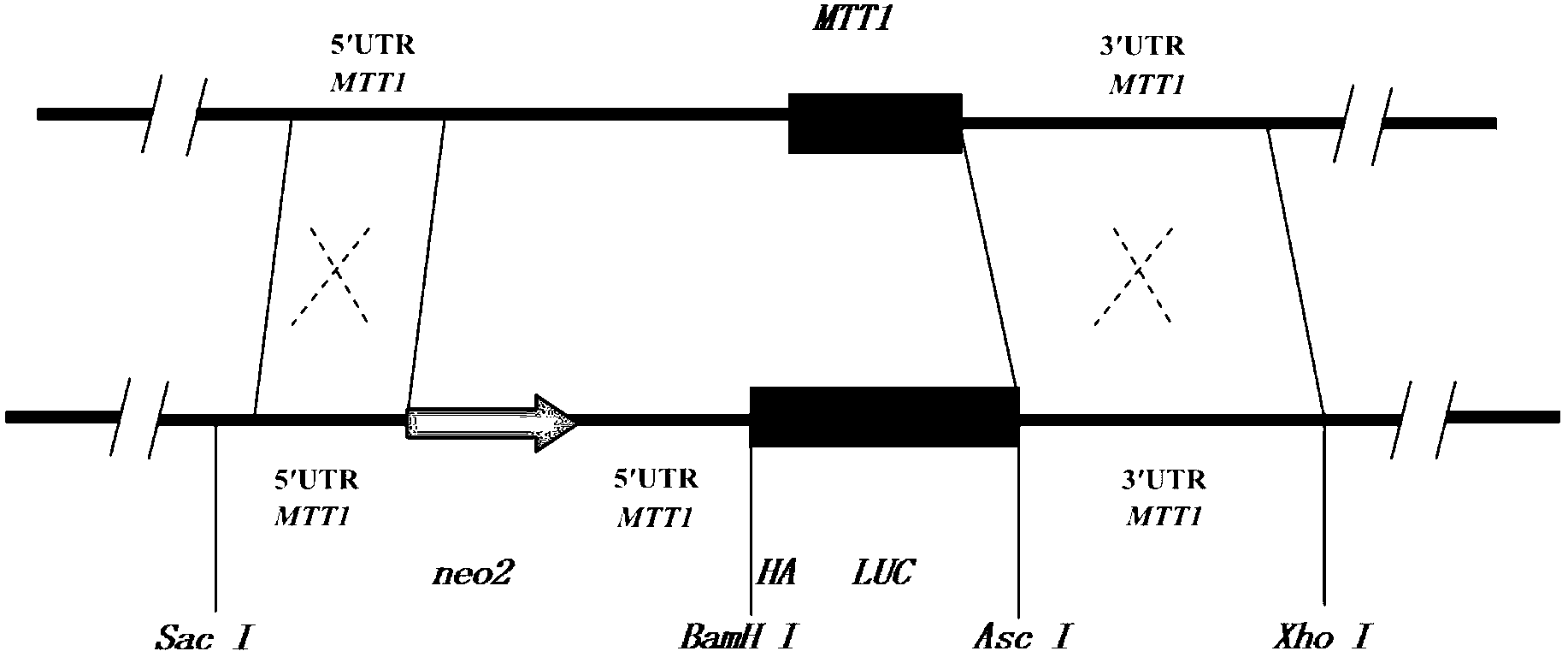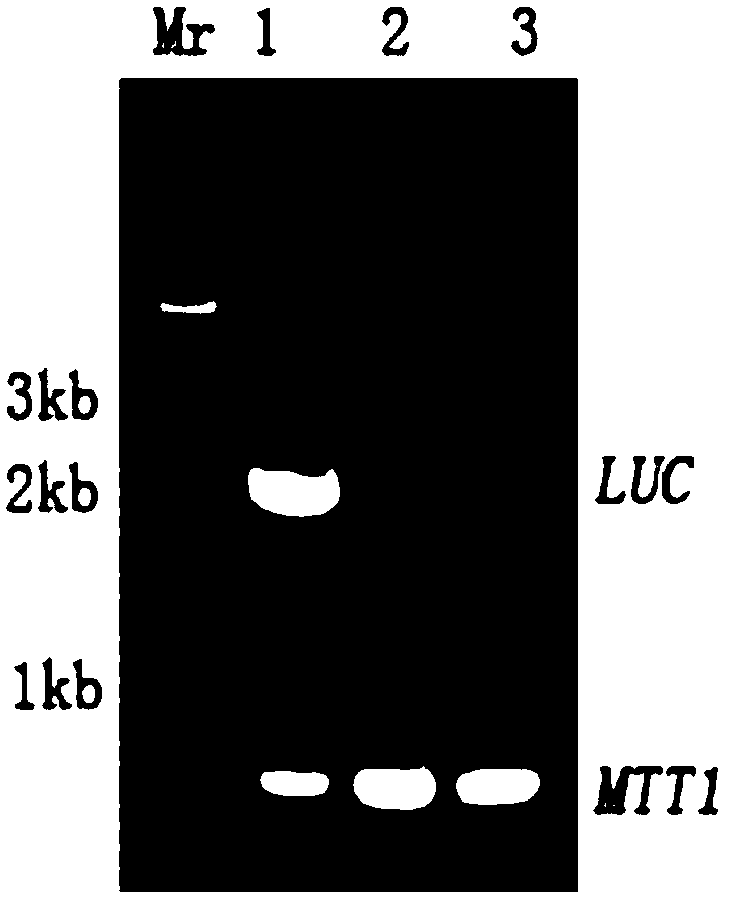Tetrahymena cell line containing luciferase gene, construction method and applications thereof
A technology of luciferase gene and Tetrahymena, which is applied in the field of genetically engineered cell lines, can solve the problems that Tetrahymena cell lines have not been reported, and achieve the effect of simple and fast detection process, rapid response and detection operation
- Summary
- Abstract
- Description
- Claims
- Application Information
AI Technical Summary
Problems solved by technology
Method used
Image
Examples
Embodiment 1
[0028] Example 1 Amplification of Luciferase LUC Gene and Construction and Identification of Intermediate Plasmid pBX-LUC
[0029] Design primers, use PCR method to add BamH I and Asc I restriction sites on both ends of the firefly luciferase gene, and optimize the N-terminal and C-terminal sequences of the LUC gene to be able to The codons expressed efficiently in Tetrahymena, the PCR product is recovered and mixed with the vector pEASY-T1 in an appropriate ratio, ligated at 25°C for 20 minutes, and the ligated product is transformed into E. coli DH5а for large-scale amplification, and the plasmid pEASY-T1-LUC is extracted and combined Carry out restriction digestion identification.
[0030] PEASY-T1-LUC and the intermediate plasmid pBX were digested with BamH I and Asc I, and the digested product was recovered. The digested LUC and the vector were mixed in proportion, and ligated with T4 ligase overnight at 16°C. The product was transformed into Escherichia coli DH5а, coated wit...
Embodiment 2
[0031] Example 2 Construction and identification of Tetrahymena cell strain containing luciferase gene
[0032] The constructed intermediate vector was linearized by Xho Ⅰ restriction enzyme digestion, purified and concentrated with ethanol, then wrapped on gold particles, and transformed into Tetrahymena B2086 starved for 18-24 hours by gene gun particle bombardment, and then added with Paromonas 4 hours later (Final concentration is 100ug / ml) and CdCl 2 (The final concentration is 0.5ug / ml). Dispense them into 96-well plates. After incubating at 30°C for 3 days, gradually increase the concentration of paromomycin to screen recombinant Tetrahymena B2086-LUC. The principle is the process of gene recombination ( figure 2 ), and finally expand the recombinant Tetrahymena B2086-LUC, extract genomic DNA for PCR identification ( image 3 ). M: DNA standard molecular weight; 1: PCR products of LUC gene and MTT1 gene were detected using recombinant Tetrahymena B2086-LUC genome as templa...
Embodiment 3
[0033] Example 3 Expansion culture and preservation of Tetrahymena cell line B2086-LUC containing luciferase gene
[0034] Under the microscope, single cells of recombinant Tetrahymena were gradually expanded and cultured to obtain a large number of homotypic recombinant cell lines B2086-LUC, which were frozen in liquid nitrogen.
PUM
 Login to View More
Login to View More Abstract
Description
Claims
Application Information
 Login to View More
Login to View More - R&D
- Intellectual Property
- Life Sciences
- Materials
- Tech Scout
- Unparalleled Data Quality
- Higher Quality Content
- 60% Fewer Hallucinations
Browse by: Latest US Patents, China's latest patents, Technical Efficacy Thesaurus, Application Domain, Technology Topic, Popular Technical Reports.
© 2025 PatSnap. All rights reserved.Legal|Privacy policy|Modern Slavery Act Transparency Statement|Sitemap|About US| Contact US: help@patsnap.com



